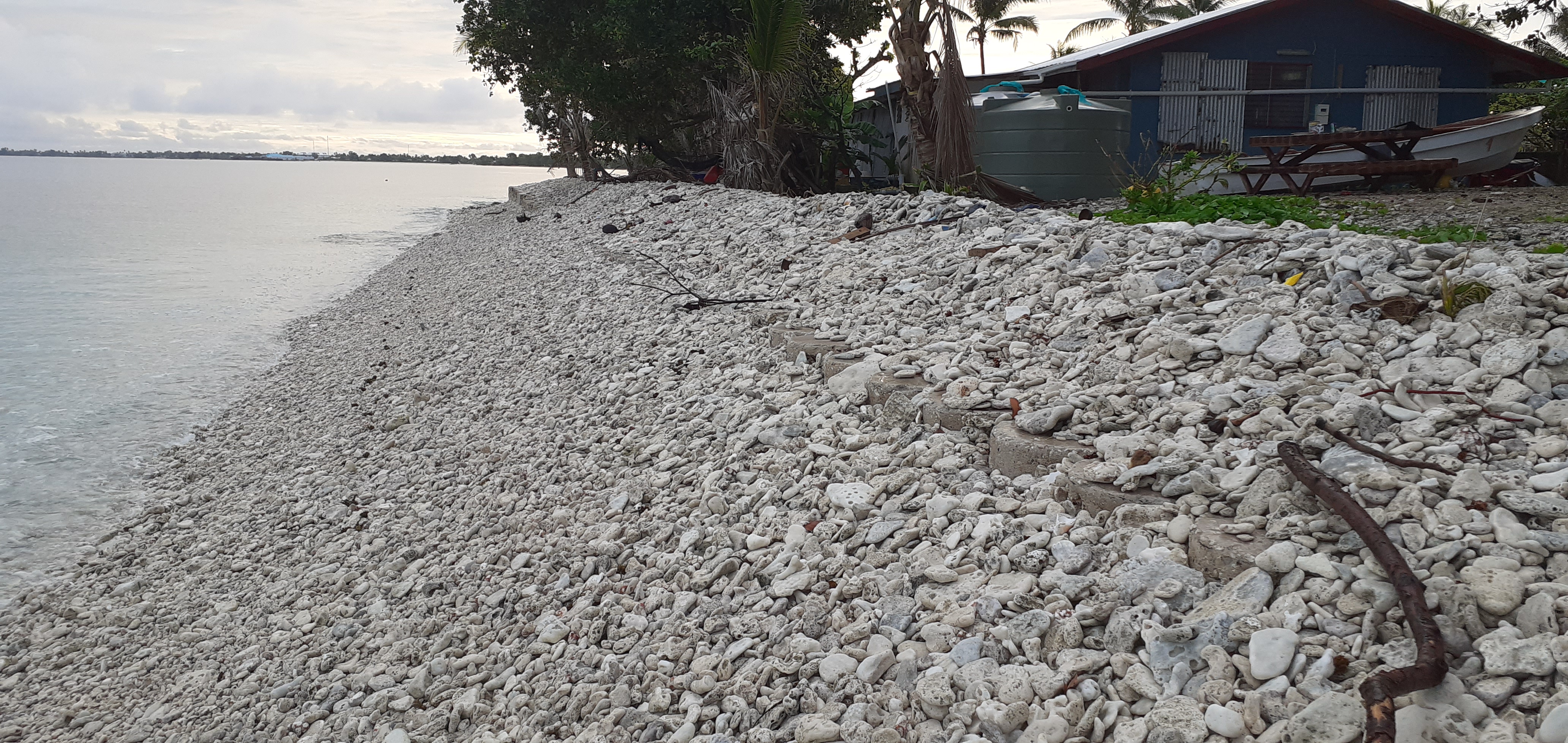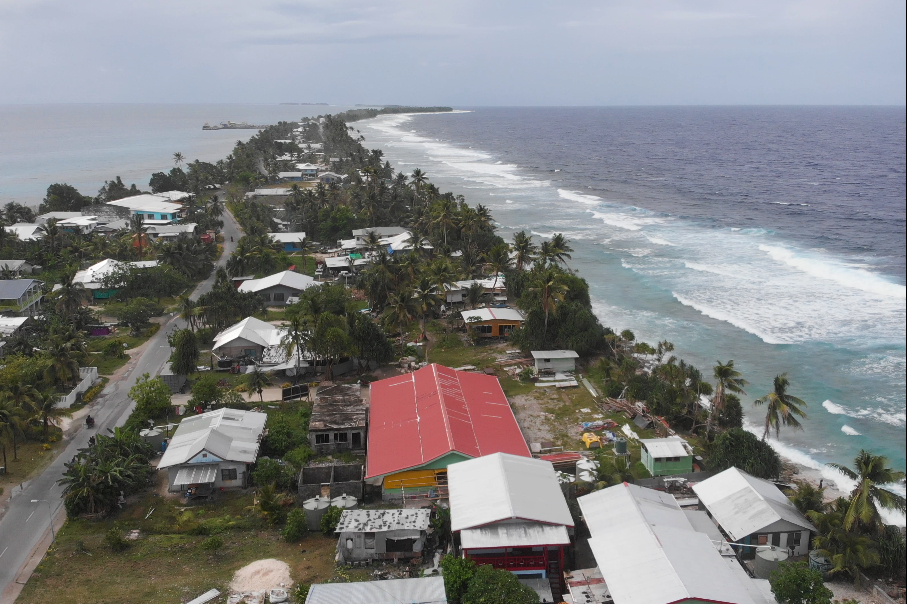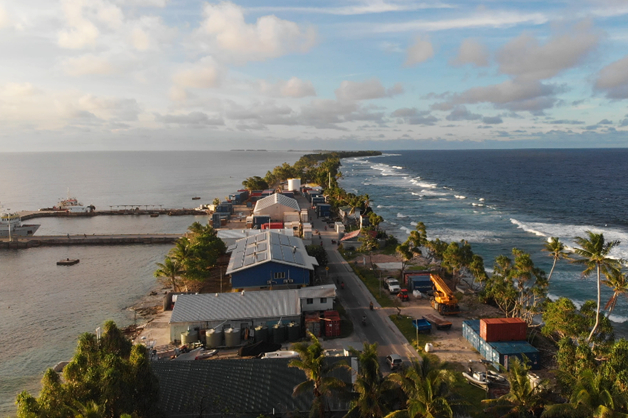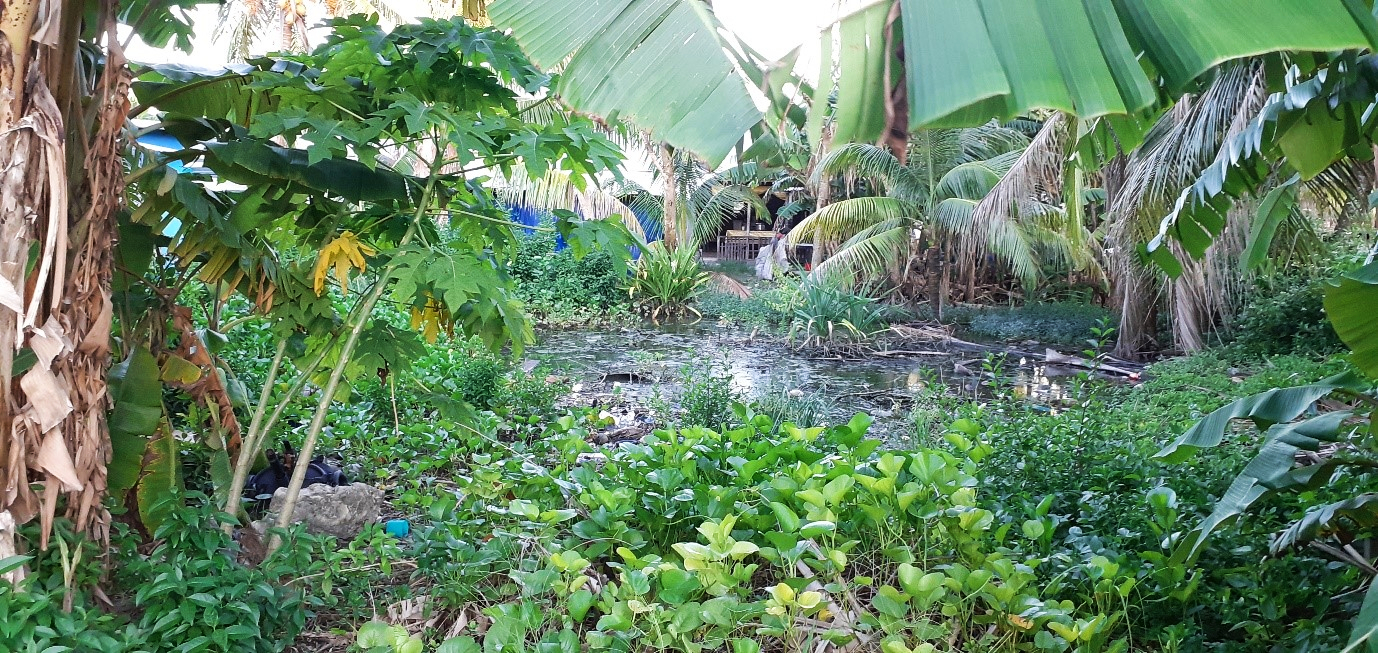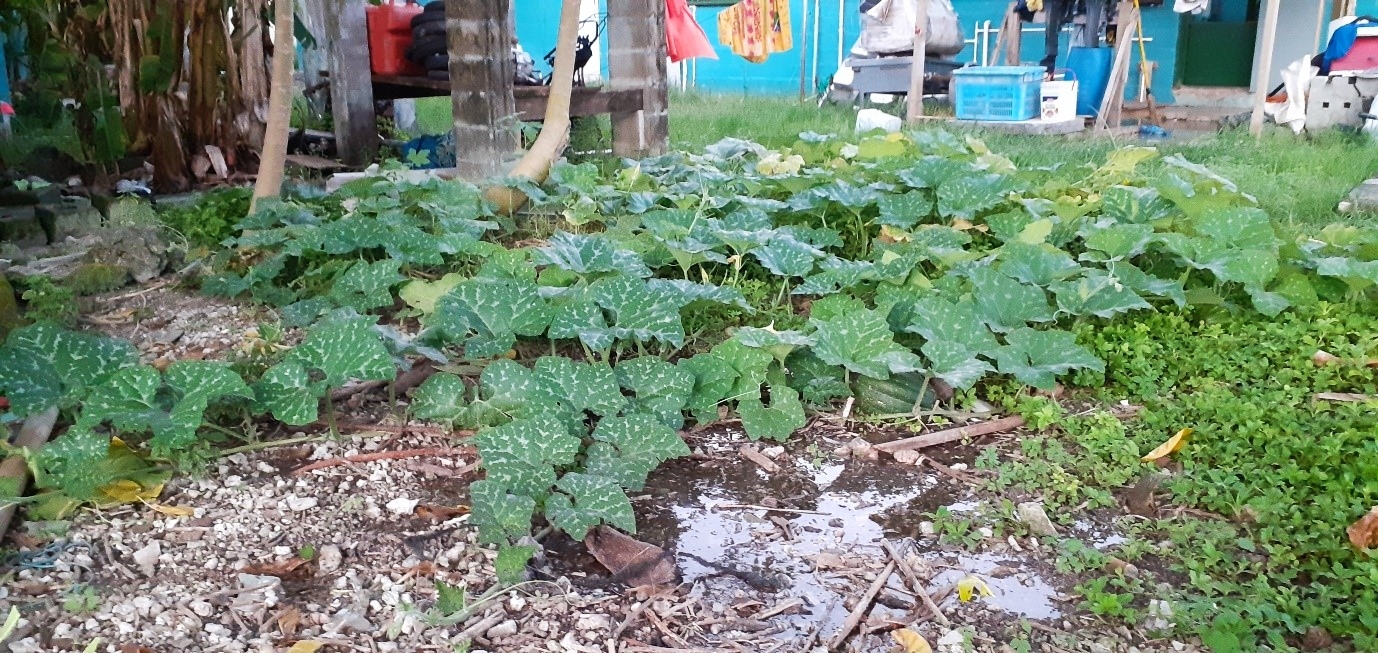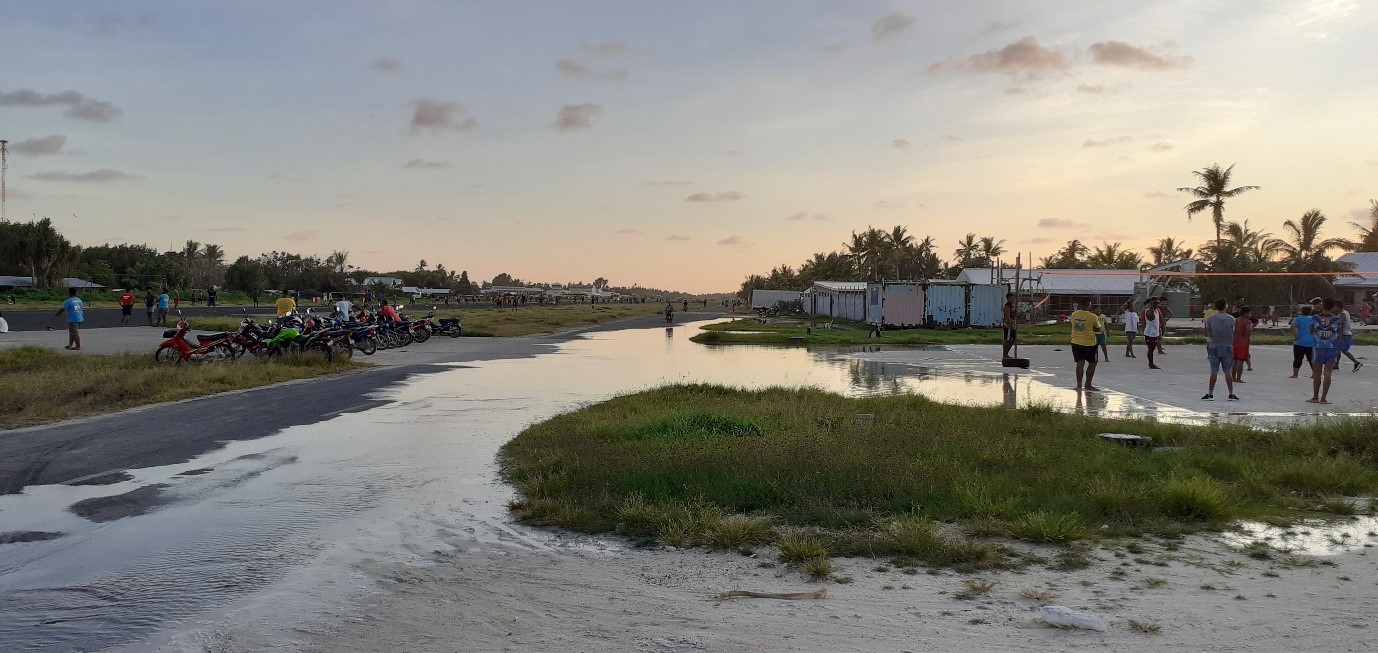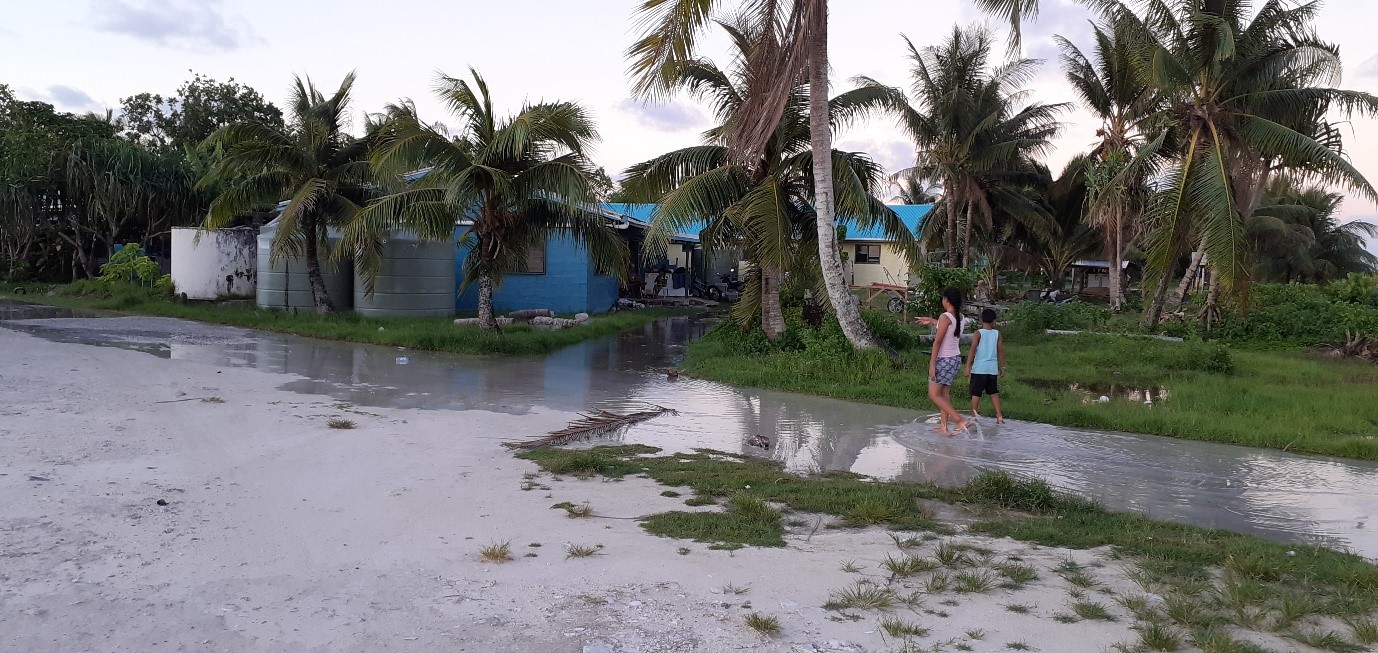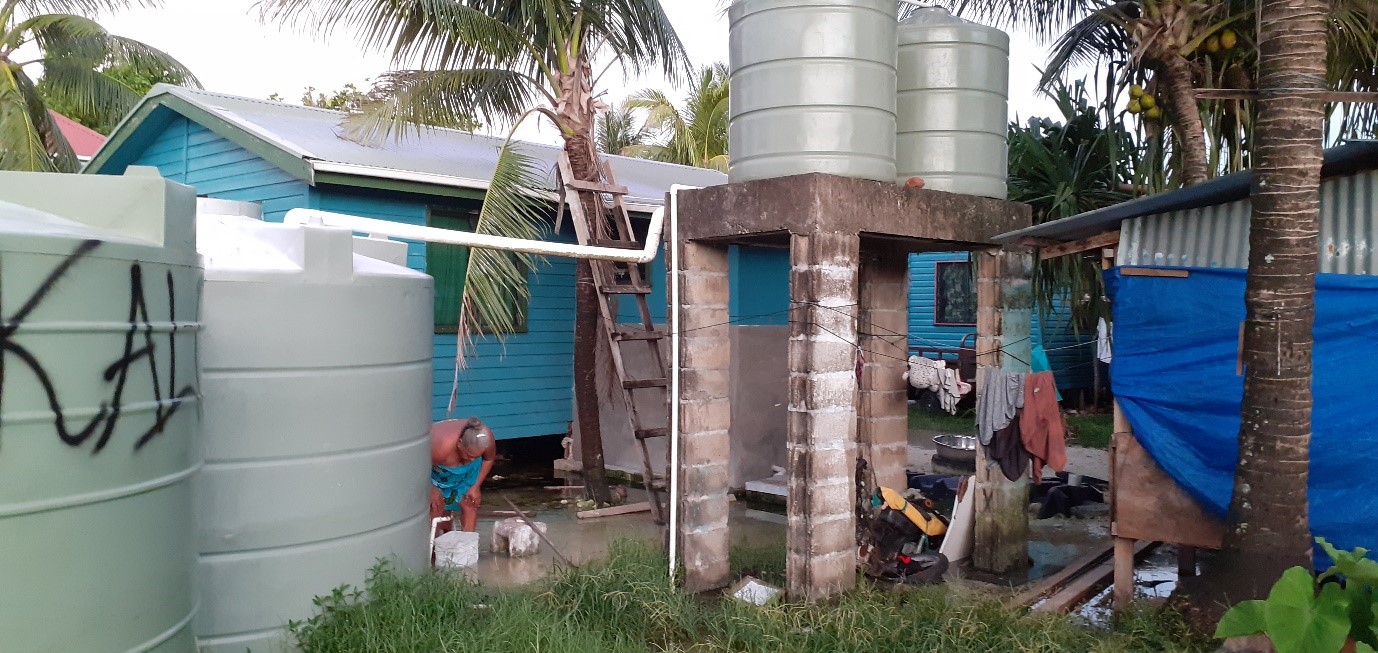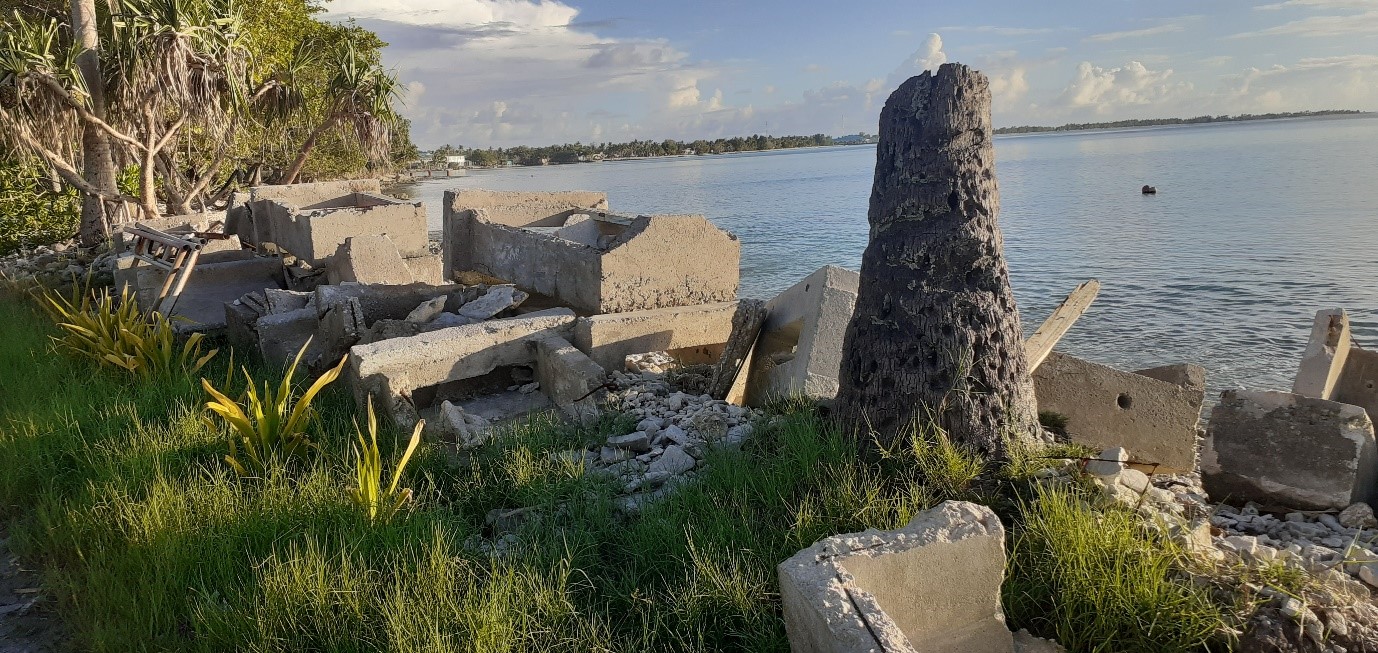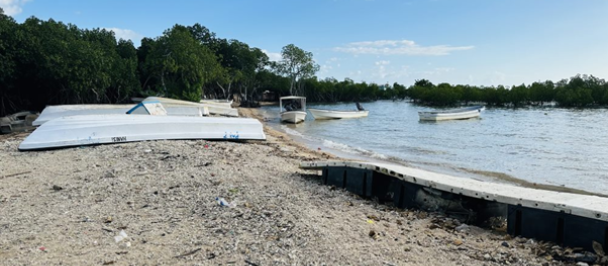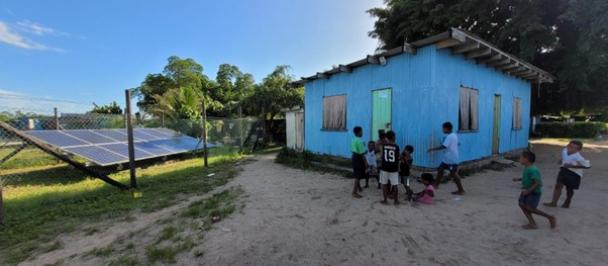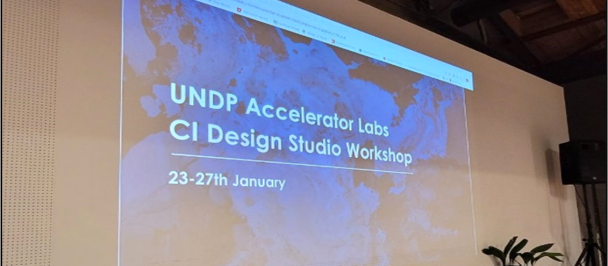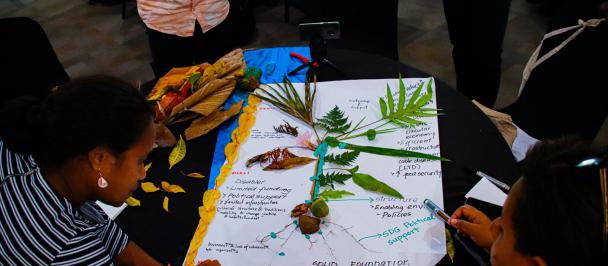Coastal Protection on Fongafale (Photo: UNDP/Mohseen Dean)
Tuvalu, a dot on the globe, but home to 11,500 people and 1000 km away from the next ATM[1], face an existential threat. Climate induced hazards such as rising sea levels, cyclones, tsunamis, droughts, flooding, king tides and saltwater intrusion have been an ever-increasing menace for the country.
The United Nations Intergovernmental Panel on Climate Change (IPCC) predicts that 0.9 meters of increase in global sea level by 2100 has the potential to degrade up to one meter of Tuvalu shoreline per year. This will push Tuvalu’s future more into uncertainty, due its location, size, geomorphology, and an average height above sea level of less than 2 meters (refer Figures 1 and 2). This makes Tuvalu the face of and the perfect brand ambassador for Climate Tragedy.
In my previous post, I discussed the blended methods approach that was deployed to carry out the Solutions Safari on Fongafale, Funafuti in Tuvalu. In this post, I specifically want to focus on the impacts of sea level rise, king tides, and high intense waves as insights drawn from the Safari.
Figure 1: Aerial view showing the vulnerability of Fongafale; from left to right: lagoon, islet of Fongafale, seaward side. (Photos: Lukasz Skalik)
Figure 2: A part of Fongafale harboring the seaport (Photos: Lukasz Skalik)
Sea Level Rise
Tuvalu is the prime hotspot for discussions concerning sea level rise and its threats to the communities living there. I learnt from the students of Fetuvalu High School who highlighted during an idea competition that sea level rise is an ongoing threat to their lives, homes, plantations, and their beaches. I was amazed at the strongly worded responses from these students. For instance, they associated climate change and sea level rise with something that ‘drained their land, made their living environment dangerous and flooded their islands’, they also associated the ocean with sources of food and income, but due to sea level rise also perceived it as ‘the cause of the end of Tuvalu’, and a force that has been ‘destroying their livelihoods, ecosystem, environment and so much more’ (refer Figure 3).
Figure 3: Responses of students.
King Tides
The communities’ vulnerability to sea level rise, specifically king tides, stood out during the mission. On the evening of the Wednesday 11 March 2020, locals alerted me that the king tide was going to take place and I would be able to witness the effects of it in real time. While I have heard about king tides during my Bachelor study days, I have never experienced it, and this was the perfect opportunity. I have been told by my professors that king tides can cause coastal erosion and inundation. This experience left me deeply troubled as I learned that there was more to it then what I was taught.
On Fongafale, the king tide is not only a contributing factor to coastal erosion and inundation but is also responsible for turning available land into swampy areas (refer Figure 4) which could have been used for other purposes, affects food gardens (refer Figure 5) , and is deteriorating the quality of the ground water rendering it non-viable for drinking.
Figure 4: Some productive land turning into swampy areas. (Photo: UNDP/Mohseen Dean)
Figure 5: King tide affects pumpkin garden. (Photo: UNDP/Mohseen Dean)
I learned that the Government of Tuvalu has barred the whole of Funafuti from utilizing ground water completely, because the quality of ground water has deteriorated to astonishing levels, firstly due to it mixing with underground sewage spills, and secondly due to it becoming saline in nature as a result of sea water intrusion. Below are some other observations on the effects of King tide (refer Figures 6-8).
Figure 6: Sea water intrusion on roads and playfields during king tide. (Photo: UNDP/Mohseen Dean)
Figure 7: Children wade through the rising waters of the king tide, and the water intrudes in the compounds of people. (Photo: UNDP/Mohseen Dean)
Figure 8: An elderly woman has no option but to stand in the rising water caused by king tide and carry out chores. (Photo: UNDP/Mohseen Dean)
High Waves
High waves can be disastrous. For example, it was revealed by families living on the seaward side of Fongafale that they experience unusually high waves (claiming to be induced by strong winds) that spray salty seawater onto their homes and gardens, and affect sites of cultural importance such as the burial grounds by washing away tombs from their original grave sites. While these concrete tomb structures are a loss to some, for others on the island, it is a gain. A local informed me that “these washed away tombs act as a barrier protecting them from storm surges” (refer Figure 9).
Figure 9: Remains of tombs as a result of cyclones, storm surges, and high intense waves (Photo: UNDP/Mohseen Dean)
Also, high intense waves coupled with cyclones can be extremely destructive to Small Island States (SIDS) such as Tuvalu. A recent study states that cyclone events can generate waves between 3 to 4+ meters, as in the case of the 2015 Tropical Cyclone Pam during which high waves destroyed homes, crops and livelihoods, and displaced 45 percent of Tuvalu’s population.
The Prospects
Given the current climate trajectory, scientists from various disciplines predict that Tuvalu could become uninhabitable in the next 50 to 100 years. However, locals feel that is optimistic. Especially the students of Fetuvalu, who fear that a day will come when the whole of Tuvalu will be stolen by the sea due to sea level rise and coastal erosion, and this could be sooner than predicted.
For UNDP, any development dealing with sea level rise and climate change in Tuvalu (and perhaps in other parts of the world) would require working together with the local communities and its marginalized members to discover the ‘unknown from the known’ - knowledge that is out there, everyone’s aware of it, but whose existence, relevance and value has not been realized. Harnessing such knowledge systems could potentially lead to ‘inclusive climate resilient development’. Considering the current climate tragedy that Tuvaluans are faced with, in the next post I will look at another key insight, specifically focusing on local solutions for climate adaptation and mitigation.
[1] a tiny speck of land, surrounded by a vast ocean, far away from a lot of the usual hallmarks of modern life.

 Locations
Locations
